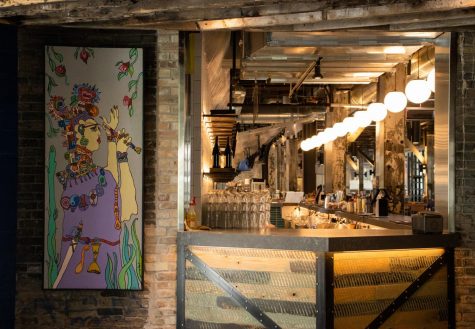The Market at Malcolm Yards, a new food hall in Prospect Park, is set to open Aug. 5. The food hall is part of a development that will bring market rate and affordable housing, breweries and parks to the Prospect Park neighborhood.
The market will feature nine kitchens with a diverse mix of foods, a self-pour tap wall with 32 selections and a service bar with 17 tapped cocktails.
Molly Herrmann, the community outreach and events manager at Malcolm Yards, said the market will bring a sense of community to the Prospect Park area.
“The area is ripe with wanting something unique and affordable and engaging in a sense of community,” Herrmann said. “There’s not a whole lot around for entertainment and dining opportunities and I think that we’re excited to bring that to the table.”
Herrmann said the Market will host community events including a free community yoga event every Sunday.
When completed, the Malcolm Yards development will feature a mixed-use market-rate apartment building, an affordable housing apartment building and office spaces.
Jeff Ellerd, a developer with Wall Companies, said construction on the mixed-use market-rate apartments is set to begin in November of this year, while the affordable housing apartment building is set to begin construction at the beginning of 2022.
Joey Meatballs, a fast-casual Italian kitchen, will be one of the nine vendors in the Market. Joshua Hedquist, the owner of Joey Meatballs, said the Market is a mission-based development project.
“It’s a true way to incubate an idea and see it come to life and see it come to fruition,” Hedquist said.
Hedquist is also the Chairman of the Board of Directors at the Redemption Project. The project works to educate individuals while they are incarcerated, and connects formerly incarcerated individuals with employment opportunities at local businesses.

Hedquist said Joey Meatballs will be partnering with the Redemption Project to provide employment and mentorship for formerly incarcerated individuals.
“I want Joey Meatballs to be the flagship in the food industry of being a felony friendly work environment,” Hedquist said. “We’re not trying to hire felons to come in and be dishwashers and wipe down tables. We’re working with these [people] because we want them to be leaders in our community.”
The Market was built from the structure of the Harris Machinery Building, which was constructed in 1870. Eric Amel, the president of Prospect Park Neighborhood Association, said the Market preserves that historical heritage in the neighborhood.
“[I’m] glad that [Wall Companies] are doing effectively the right thing and saving those building assets that we already have, that have industrial and historic heritage in the neighborhood,” Amel said.
